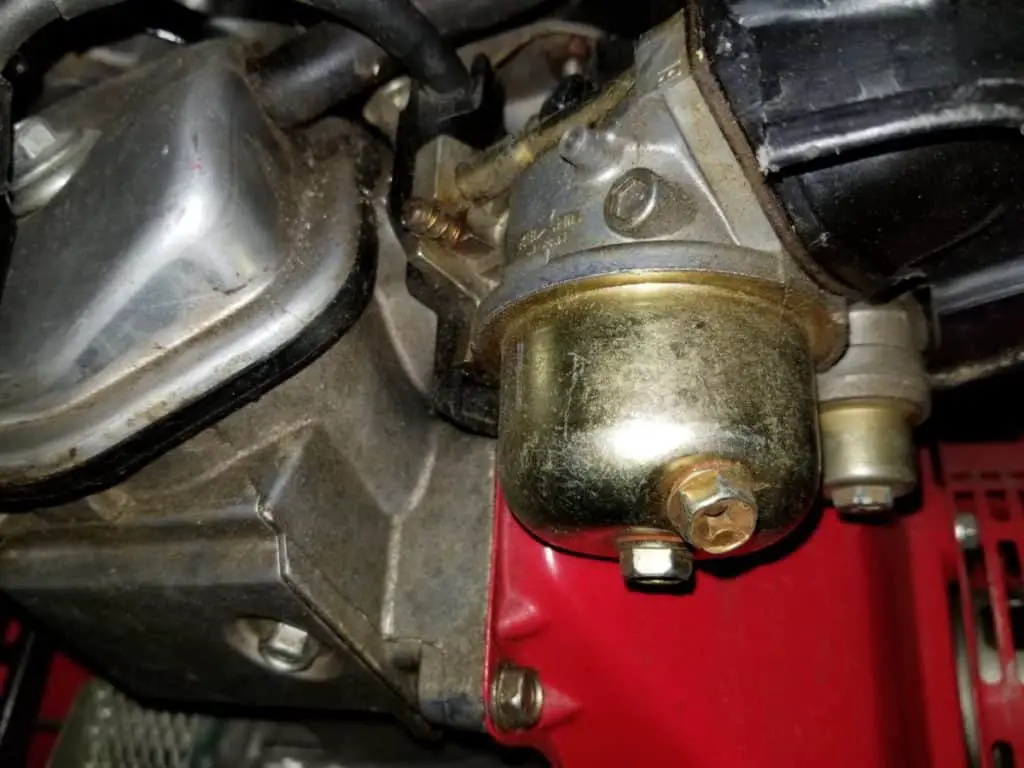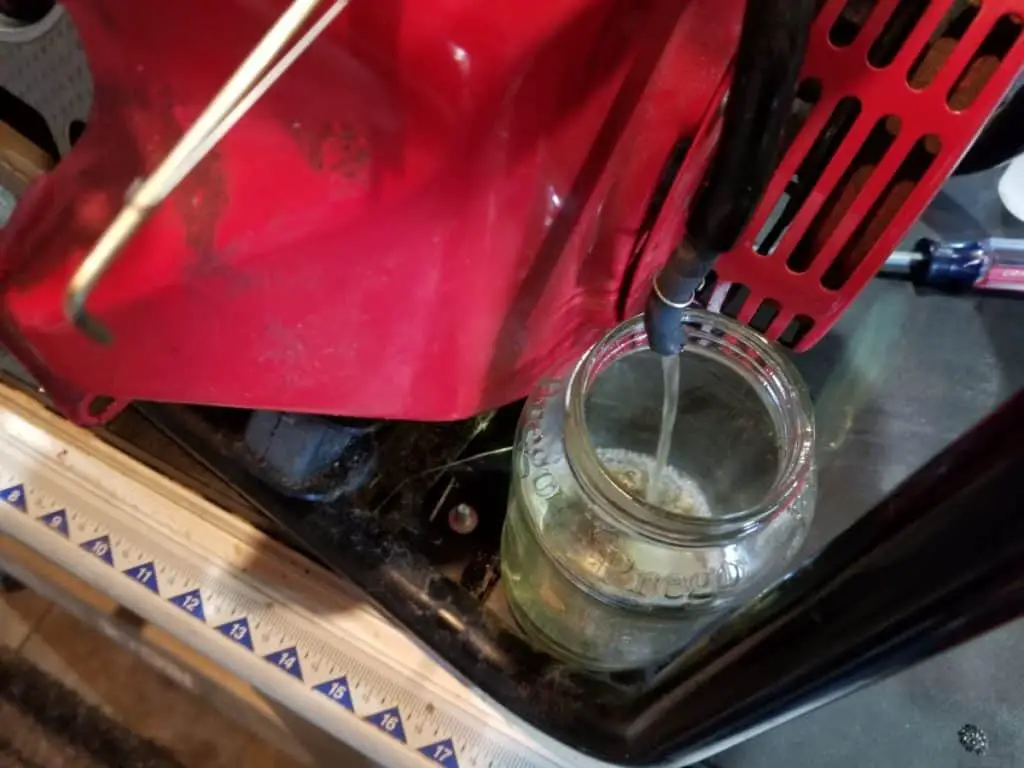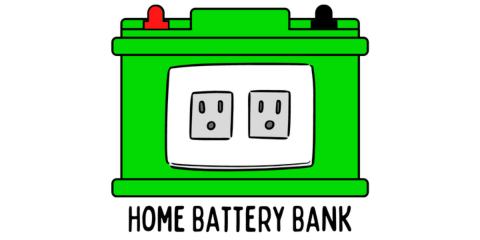A common cause of your generator not starting or stalling shortly after startup is water mixing in with your gasoline. If you unscrew the cap to your gas tank and use a flashlight, you might see blobs floating at the bottom as you give the generator a gentle shake. Those blobs are water.
But you didn’t leave your generator outside during storage, and you didn’t operate it in the rain, so why would there be water in your tank?
Generators will have water in the gas tank primarily due to condensation within the tank when it gets cold as well as additives in the gas bonding with moisture in the air. Storing a generator with treated non-ethanol fuel and keeping the gas tank full can prevent this.
Now that you’ve got the quick and easy answer, lets take a look at how to prevent this from happening again and what to do about it to fix the situation if you’re already in the middle of it.
How to Remove Water from My Generator’s Gas Tank (and Carburetor)
If you’ve got water in your gas tank, you’re also likely going to have it in your carburetor as well, so we are going to need to get it out of both.
First, determine how old your gas is and whether or not it has been treated with a fuel stabilizer. If it is older than three months, hasn’t been treated, and has water in it, we can drain it completely into a container and dilute it with good gas in your vehicle (don’t worry, we’ll get the water out first!).
If it is older than a year, untreated, and has water in it, we’ll dispose of it at a proper facility that handles such a thing.
If it’s under a year, has been treated, and has water in it, we can just get the water out and continue to use the gas in the generator (as long as the gas doesn’t look or smell like it has gone rancid).
Since water sinks when mixed with gasoline, the first thing to drain out if the fuel lines will be the water. That will be the first step for any of the scenarios mentioned above.
Simply turn off the fuel petcock (the fuel shutoff valve), place a proper container (I use a glass jar) under the carburetor and remove the main bolt that holds the bowl on.
I know what you’re thinking. Why not the drain bolt? Water is heavier than gas and will sink to the bottom of the sediment trap which is below the drain bolt, so you won’t get all the water out if you don’t remove the bowl entirely.

Allow the gasoline to flow out of the main bolt hole and into the jar. When it’s done, you can gently remove the bowl and empty out and remaining contents and inspect the inside of the bowl. Reattach the bowl and be careful to have the gasket lined up correctly. I have an entire article and step-by-step video of how to work on a generator’s carburetor if it’s your first time.
Now that the carburetor has been drained, disconnect the fuel line either at the carburetor or the inline fuel filter (if yours has one). Place the disconnected fuel line in the same jar and open the fuel shutoff valve but be ready to close it quickly.

As you open the valve, water should be the first thing to drain out, or a fuel-water mix. You’ll probably want to drain 6-10 ounces to make sure you got everything, maybe more. If you’re unsure, shine a light in the gas tank and give the generator a gentle shake. Do you still see blobs?
If yes, let them settle at the low point again (where your fuel line connects) and repeat the process.
If you intend on using the gas in your generator still, then you’re mostly all set. You could actually use the gas in the jar as well by getting the water out. To do this, simply take the lid to the jar and drill a small hole near the edge but still on the bottom.
Place a piece of heavy-duty tape (yes, the gasoline will eventually eat away the adhesive) over the hole and screw the lid on the jar. Very gently roll (don’t quickly turn!) the jar over so that it’s upside-down and have the hole as the bottom-most point.
Hold it upside down for a few seconds or so to allow any settling (you’d have to wait longer if you turned the jar quickly) and then peel back the tape so that the water (which will sink to the lowest point) can empty into another jar. As soon as gas starts to pour out, turn the jar right-side-up and you will have successfully removed probably 95% of the water.
Carefully pour that gas back into the gas tank and maybe leave the last ounce or two as waste if you’re concerned about the trace amounts of water.
Party on if you’re keeping the gas once you’ve drained the water out. If you intend to use the gas in your car then drain the rest of the tank into a gas can to pour. If you plan on disposal then do the same.
How to Prevent Water from Getting in My Generator’s Fuel
The steps to keep water from getting in your generator’s fuel are pretty simple.
- Keep the fuel in the gas tank at the max fill level
- Use non-ethanol fuel and treat it with a fuel stabilizer immediately after purchase
Keeping your gas tank to the designated max fill as designated by your manufacturer (not spilling over!) is the first step in preventing water in your fuel. Remember, the gasoline needs some room for expansion when it gets hot, so only fill it to where the manufacturer has specified in your manual.
By filling the tank properly, you minimize the amount of air in the tank. Air carries moisture in it, and with dramatic drops in temperature, the moisture in the air will condensate on walls of the inside of the cold gas tank. When that condensation builds up it will run down into the gasoline, or simply moving your generator will allow the gasoline to slosh around and mix with the water on the walls.
Furthermore, using non-ethanol blended fuel that is treated (I prefer this product to treat your gas for up to 2 years of storage, seen here on Amazon). Ethanol in fuel wants to bond with water in the air and will readily suck up any moisture in it. Also, from my experience of repairing generators and other small engines, engines that are left long-term with ethanol-blended fuels tend to gum up more in the fuel lines, the fuel filters, and the carburetors.
If you don’t know where to get non-ethanol fuel, there is a handy site here where you can see the locations throughout the USA and Canada.
Final Thoughts
Proper shutoff of your generator for storage is critical for having it start up on the first or second pull — every time. It’s not hard to do, but it’s a little more involved than simply hitting the “kill switch” on the generator and calling it a day.
I have a video here that covers how to properly shut-off your generator for long term storage and how to store a generator with gas.
Good luck with fixing your generator’s gas problem and make sure it doesn’t happen again by following the steps mentioned above!

